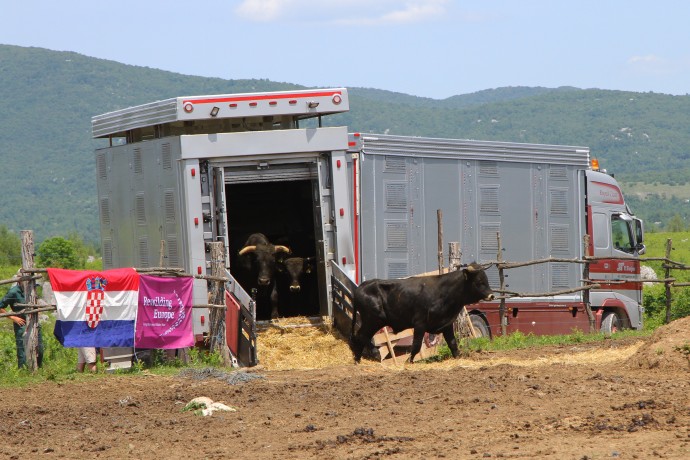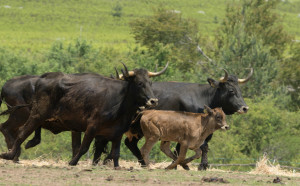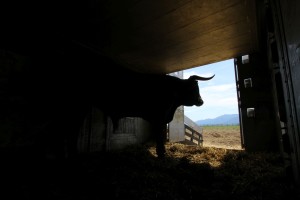This Wednesday, 20 Tauros safely arrived at the spectacular Lika Plains, Velebit rewilding area in Croatia, where they will join the existing herd in the largest Tauros breeding site of Rewilding Europe. Here, through natural grazing, wild-living herds of Tauros and horses restore natural processes. The impact of bovines on the landscape is already visible, while large predators in turn influence the behaviour of the large herbivores.

A specialised transport company brought 20 Tauros to the area, after more than two days on the road. The 20 animals originate from the Netherlands; 14 from the Kempen~Broek nature reserve and eight from the Keent Tauros breeding area, and are all part of the European Wildlife Bank. The new herd consists of different ancient cattle breeds: two Sayaguesa, two Maremmana, while others are second generation cross breeds of Maremmana, Sayaguesa and Tudanca. After a short acclimatisation period, the animals will join the existing grazers in the Lika Plains and will breed towards a next generation in the Tauros breeding programme.
— “I really hope that this Tauros herd will easily adapt to the new environment with predators around. They will need to learn how to defend themselves from wolves predating on them“ – said Ronald Goderie from the Taurus Foundation.

Through natural grazing, large herbivores create a dynamic mosaic landscapes. To improve the biodiversity of this Natura 2000 site, Rewilding Europe is gradually supporting wild and semi-wild grazers to come back to their natural habitats. In Lika Plains, the animals live in social herds without direct human management and are exposed to harsh natural conditions, steadily moving towards becoming self-sufficient.
“This is another important step for the rewilding of Velebit” – says Davor Krmpotic, team leader of Rewilding Velebit. “Since we started one year ago, the positive impact of the large grazers is already noticeable – flowers that I haven’t seen for decades are blooming this spring in this amazing landscape. Nature is really coming back”.
The same effect will soon unravel when this grazing pilot area will be extended to over 1 000 hectares. For Rewilding Europe, Lika Plains is one of the best showcases of the comeback of natural processes at scale. A portion of this vast grazing site is visible from the highway connecting Zagreb with the southern coast. The presence of large herbivores and wild animals attracts nature lovers, wildlife watchers and other tourists, resulting in a nice synergy of ecological, business and tourism interests. In the long term we will explore the possibility to connect Lika Plains with the Velebit Mountains, to allow for seasonal migration of wildlife. This will be one of the first of its kind in Europe.
The Tauros Programme

The aurochs is the ancestor of all cattle in the world and thereby the most important animal in the history of mankind. It is also a keystone species for many European ecosystems, but was hunted to its extinction in 1627. However, its DNA is still alive, but still distributed among a number of the ancient original cattle breeds. “The Tauros Programme” aims to bring back the aurochs as a functional wild animal, by back-breeding the closest relatives of the original aurochs. Natural grazing by herds of fully self-sufficient, wild bovines is one of the key ecological process that Rewilding Europe wants to bring back into European landscapes.
The ”Tauros Programme” was started by the Taurus Foundation, with the goal to bring back the closest possible stand-in (or ‘ecological replacement’) for the extinct aurochs as a wild animal. Rewilding Europe has joined forces with the Taurus Foundation in these efforts. The Tauros – as the animal will initially be called – will resemble the aurochs as closely as technically possible in appearance, ecology, behaviour and genetics. The breeding programme is founded on a broad, multidisciplinary scientific base, including geneticists, ecologists, molecular biologists, archaeologists, archaeo-zoologists, historians, isotope experts, cattle experts and European cattle breeding organizations. The final goal of the programme, to be met in some 20 years, is the presence of the Tauros in self-sufficient, wild living, herds of at least 150 animals each in 5 rewilding areas in Europe.
